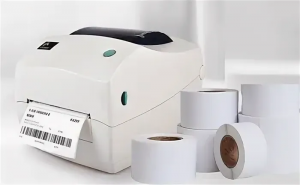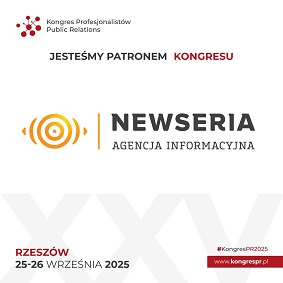Direct Thermal Labels Market Projected to Expand at 3.5% CAGR, Surpassing $ 4.65 Billion by 2034
The Direct Thermal Printer Labels market is expected growth, driven by increasing demand for efficient & cost-effective labeling solutions in various industries
What Are Direct Thermal Printer Labels?
Direct thermal printer labels are a type of label that does not require ink, toner, or ribbon. Instead, the printing process uses heat-sensitive media, which reacts to heat from the printer head to produce the image or text. This method is widely preferred for applications that require short-term use, such as shipping labels, price tags, name badges, and medical records.
These labels offer key benefits such as cost-effectiveness, low maintenance, high-speed printing, and reduced environmental impact due to the absence of ink or toner cartridges. However, their main drawback is sensitivity to heat and light, which limits their durability in certain environments.
Download Exclusive Sample Copy of this Report here: https://www.marketresearchfuture.com/sample_request/27302
Market Dynamics
Market Drivers
Booming E-commerce Industry
One of the major drivers of the direct thermal printer labels market is the exponential growth of e-commerce. Online retailers rely heavily on direct thermal labels for shipping, warehousing, and inventory management. As the global volume of e-commerce shipments continues to increase, the demand for fast and efficient labeling solutions rises in tandem.
Cost Efficiency and Operational Simplicity
Direct thermal printing systems are relatively inexpensive to operate. Since they do not require ribbons or inks, the operational cost is significantly lower compared to traditional printing methods. This makes them especially attractive to small and medium-sized businesses looking to streamline their labeling operations.
Growth in Retail and Logistics Sectors
In retail environments, direct thermal labels are used extensively for point-of-sale (POS) labeling and barcode tagging. In logistics, these labels play a crucial role in packaging, shipment tracking, and warehousing. The global expansion of supply chain networks continues to drive demand.
Advancements in Label Materials
Recent innovations have improved the durability and heat-resistance of direct thermal labels, making them more suitable for a wider range of applications, including outdoor usage and longer shelf lives.
Market Restraints
Limited Durability
A significant limitation of direct thermal labels is their sensitivity to heat, moisture, and UV exposure. This can limit their usability in industries where labels are exposed to harsh conditions over long periods.
Environmental Concerns
Although direct thermal labels eliminate the need for inks and toners, many still use chemically treated paper that may not be recyclable. This raises sustainability issues and regulatory scrutiny in some regions.
Buy Now & Get Exclusive Discount on this Report: https://www.marketresearchfuture.com/checkout?currency=one_user-USD&report_id=27302
Regional Insights
North America
North America holds a significant share of the global direct thermal printer labels market, thanks to a mature retail infrastructure and the presence of leading logistics providers like FedEx and UPS. The U.S. and Canada are early adopters of automated labeling technologies, further supporting regional growth.
Europe
Europe is another strong market due to its strict regulations around traceability and food safety. Countries like Germany, France, and the U.K. are witnessing growing adoption of direct thermal printing in pharmaceuticals, food packaging, and logistics.
Asia-Pacific
The Asia-Pacific region is expected to witness the fastest growth during the forecast period. Rapid industrialization, a booming e-commerce sector, and increasing investment in retail and healthcare infrastructure in countries like China, India, and Japan are driving the demand for thermal label solutions.
Key Applications
Retail & Supermarkets: Price tags, barcode labels, and product labels
Logistics & Warehousing: Shipping and tracking labels
Healthcare: Patient identification wristbands, lab sample labels
Food & Beverage: Expiration date labels, nutritional information
Manufacturing: Asset tracking and compliance labeling
Competitive Landscape
The direct thermal printer labels market is moderately fragmented, with a mix of global and regional players competing based on product quality, price, innovation, and distribution network. Key players include:
Brother International
Honeywell
Fasson
Avery Dennison
Ritrama
Mactac
UPM Raflatac
Epson
3M
Intertape Polymer Group
These companies are focused on developing eco-friendly materials, expanding their geographic reach, and investing in R&D to improve label performance.
Inquiry Before Buying: https://www.marketresearchfuture.com/ask_for_schedule_call/27302
Trends Shaping the Future
Sustainable Labeling Solutions
With rising environmental consciousness, companies are exploring recyclable and biodegradable materials for direct thermal labels. There is also a growing push toward eco-labeling in product packaging.
Integration with Smart Labeling Technologies
QR codes and RFID tags are being integrated with direct thermal labels to provide more data-rich and interactive solutions. This is especially beneficial in logistics and retail for inventory tracking and customer engagement.
On-Demand Label Printing
The need for customizable, on-demand label printing is growing across industries. Direct thermal printers offer the agility required to support fast-paced operations, particularly in just-in-time manufacturing and shipping scenarios.
Complete Report: https://www.marketresearchfuture.com/reports/direct-thermal-printer-labels-market-27302
Discover more Research Reports on Packaging Industry, by Market Research Future:
Paper And Cardboard For Pharmaceutical Packaging Market https://www.marketresearchfuture.com/reports/paper-cardboard-for-pharmaceutical-packaging-market-38819
Pharmaceutical Plastics Bottles Market https://www.marketresearchfuture.com/reports/pharmaceutical-plastics-bottles-market-38827
Warehousing Sorting System Market https://www.marketresearchfuture.com/reports/warehousing-sorting-system-market-38724
Wheeled Insulated Cooler Market https://www.marketresearchfuture.com/reports/wheeled-insulated-cooler-market-38739
Plastic Free Smart Food Packaging Market https://www.marketresearchfuture.com/reports/plastic-free-smart-food-packaging-market-38908
Market Research Future
Market Research Future
+1 855-661-4441
email us here
Visit us on social media:
Facebook
X
LinkedIn
Legal Disclaimer:
EIN Presswire provides this news content "as is" without warranty of any kind. We do not accept any responsibility or liability for the accuracy, content, images, videos, licenses, completeness, legality, or reliability of the information contained in this article. If you have any complaints or copyright issues related to this article, kindly contact the author above.
Future of Audio Integration: Audfly’s New Directional Sound Modules Set to Redefine Smart Devices
Chaunte Hall featured on Trudy Jacobson's Great American Warriors
Mehmi Financial Group Expands National Business and Equipment Financing Services Across Canada
Więcej ważnych informacji
 Jedynka Newserii
Jedynka Newserii

 Jedynka Newserii
Jedynka Newserii

Handel

Mercosur to tylko wierzchołek góry lodowej. UE ma ponad 40 umów handlowych, które mogą destabilizować rynek rolny
Umowa handlowa między UE a krajami Mercosur może znacząco zaburzyć konkurencję na rynku rolnym i osłabić pozycję unijnych, w tym polskich, producentów – ostrzegają rolnicy i producenci żywności. Umowie sprzeciwia się część krajów unijnych, które domagają się klauzuli ochronnych oraz limitów importowych. – Problemem jest jednak nie tylko ta konkretna umowa. Chodzi o cały system wolnego handlu, który się kumuluje z dziesiątek innych porozumień – podkreśla Andrzej Gantner, wiceprezes Polskiej Federacji Producentów Żywności.
Firma
Dzięki zdalnej weryfikacji tożsamości z wykorzystaniem AI firmy zminimalizowały liczbę oszustw. Rozwiązania wykorzystuje głównie sektor finansowy

Z najnowszych danych Eurostatu wynika, że w 2024 roku 5,9 proc. polskich firm korzystało z rozwiązań z zakresu sztucznej inteligencji. W 2023 roku był to odsetek na poziomie 3,67 proc. Wciąż jednak jest to wynik poniżej średniej unijnej, która wyniosła 13,48 proc. Jednym z obszarów, który cieszy się coraz większym zainteresowaniem wśród przedsiębiorców, jest weryfikacja tożsamości przez AI, zwłaszcza w takich branżach jak bankowość, ubezpieczenia czy turystyka. Jej zastosowanie ma na celu głównie przeciwdziałać oszustwom i spełniać wymogi regulacyjne.
Prawo
Daniel Obajtek: Własne wydobycie i operacyjne magazyny to filary bezpieczeństwa. Zgoda na magazyny gazu poza krajem to rezygnacja z suwerenności energetycznej

Były prezes Orlenu ostrzega przed zmianami w ustawie o zapasach ropy naftowej, produktów naftowych i gazu ziemnego. Jego zdaniem przygotowana przez rząd nowelizacja tzw. ustawy magazynowej i ujednolicanie unijnej polityki energetycznej to zagrożenie dla bezpieczeństwa energetycznego Polski. W jego opinii tylko silna spółka narodowa, własne wydobycie, krajowe magazyny i zbilansowany miks energetyczny zapewnią Polsce bezpieczeństwo i konkurencyjność.
Partner serwisu
Szkolenia

Akademia Newserii
Akademia Newserii to projekt, w ramach którego najlepsi polscy dziennikarze biznesowi, giełdowi oraz lifestylowi, a także szkoleniowcy z wieloletnim doświadczeniem dzielą się swoją wiedzą nt. pracy z mediami.





![Nestlé w Polsce podsumowuje wpływ na krajową gospodarkę. Firma wygenerowała 0,6 proc. polskiego PKB [DEPESZA]](https://www.newseria.pl/files/1097841585/fabryka-nesquik_1,w_85,r_png,_small.png)



.gif)

 |
| |
| |
|